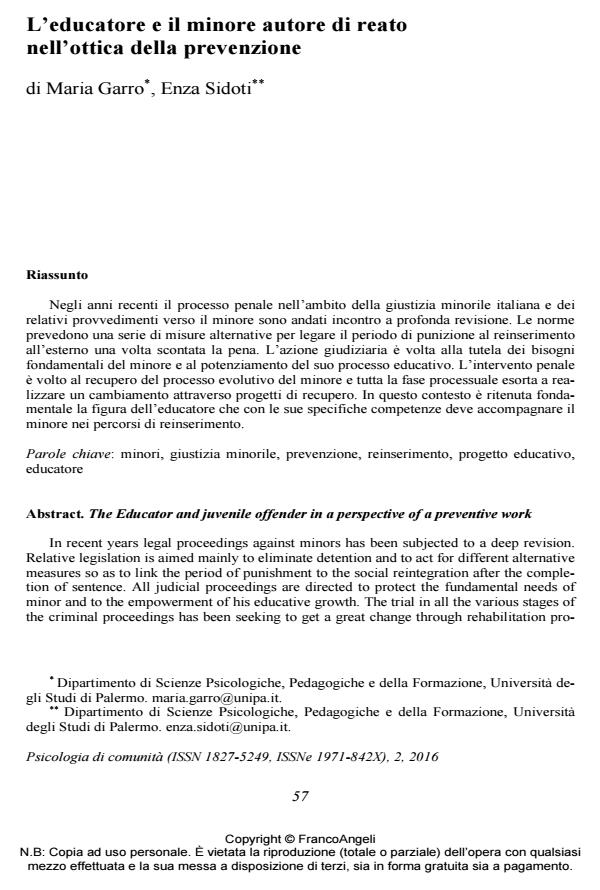The Educator and juvenile offender in a perspective of a preventive work
Journal title PSICOLOGIA DI COMUNITA’
Author/s Maria Garro, Enza Sidoti
Publishing Year 2017 Issue 2016/2
Language Italian Pages 8 P. 57-64 File size 210 KB
DOI 10.3280/PSC2016-002006
DOI is like a bar code for intellectual property: to have more infomation
click here
Below, you can see the article first page
If you want to buy this article in PDF format, you can do it, following the instructions to buy download credits

FrancoAngeli is member of Publishers International Linking Association, Inc (PILA), a not-for-profit association which run the CrossRef service enabling links to and from online scholarly content.
In recent years legal proceedings against minors has been subjected to a deep revision. Relative legislation is aimed mainly to eliminate detention and to act for different alternative measures so as to link the period of punishment to the social reintegration after the completion of sentence. All judicial proceedings are directed to protect the fundamental needs of minor and to the empowerment of his educative growth. The trial in all the various stages of the criminal proceedings has been seeking to get a great change through rehabilitation projects. In this context is considered fundamental the figure of the educator which, with his specific competencies supports the minor in the recovering pathways.
Keywords: Minors, juvenile justice, prevention, rehabilitation, educational project, educator
Jel codes: I30, I38, K14
Maria Garro, Enza Sidoti, L’educatore e il minore autore di reato nell’ottica della prevenzione in "PSICOLOGIA DI COMUNITA’" 2/2016, pp 57-64, DOI: 10.3280/PSC2016-002006